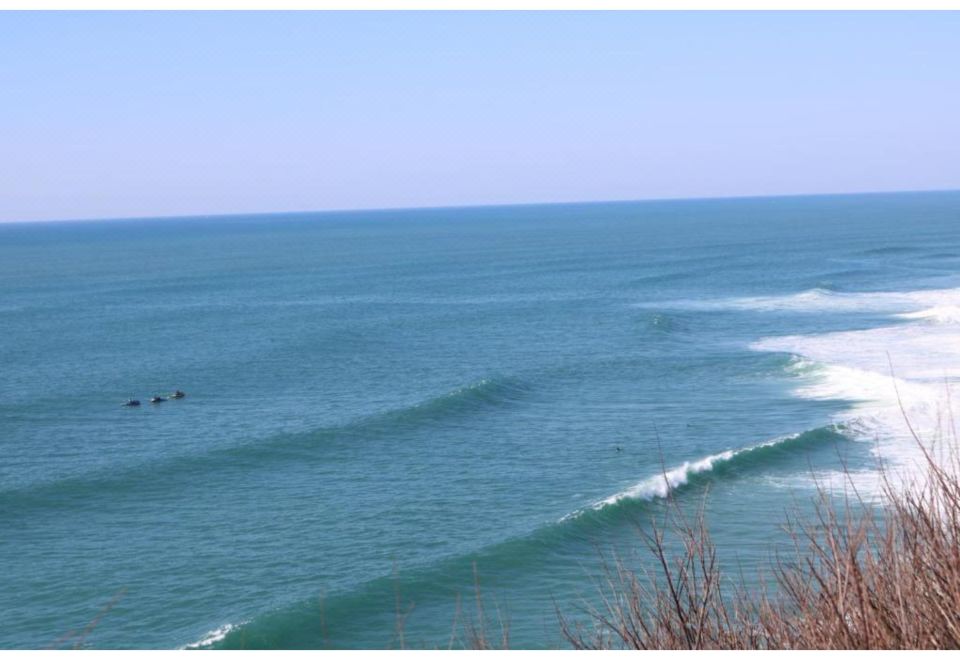The Beach of MacNamara
1晚
房間及房客
1 房, 2位成人, 0位兒童
位於納薩爾的所有住宿
The Beach of MacNamara
民宿
納薩爾, 萊里亞區, 葡萄牙
在地圖上顯示
完整地址將於預訂完成後顯示
買貴退差價

飯店設施
網球場
吸菸區
燒烤
所有設施
住宿描述
Studio fully furnished in private property inserted in a very quiet area on the edge of Wild Beach and very topical of Nazaré (Atlantic Center of Portugal).
Nazaré is a Portuguese city in the district of Leiria located in the Western sub-region, in the province of Estremadura, and the Center region and has just 100 Klm from the Portuguese capital Lisbon. The city is located 118 meters above sea level, although much of it is at sea level.
Offshore, the Nazaré canyon is an internationally renowned surf spot, where records for the biggest waves surfed are regularly broken.
The designation of city of Nazaré was attributed in 1912 to the urban ensemble made up of the population centers of Praia, Sítio and Pederneira, with differentiated chronological and community origins, but linked together by the urban part.
"praia" The beach of Nazaré is of relatively recent origin: indeed, until the seventeenth century, the sea hit the foothills of the Serra da Pederneira, covering the entire area today occupied by the beach and the houses. . The rapid geological changes that took place during that century caused the sea to recede and the area to be silted up, revealing the bay. The first references to fishing in Nazaré date back to 1643; however, it was not until the early 19th century that people began to settle on the new beach. The fishermen lived mainly in the upper parts of the city - Sítio and Pederneira - because the frequent attacks by Algerian and Moroccan pirates made the strike an insecure place.
Nazaré became famous and renowned as a bathing beach around the middle of the 19th century. Fishing, processing and selling of fish were the main activities of the population for most of the twentieth century. The harshness of sea life and the constant perils have prompted many fishermen to seek new life far from their hometowns. The construction of the fishing and marina port in the 1980s changed and improved the living conditions of fishermen, who thus initiated a new phase of the city's daily life. In the 1960s, tourism
顯示更多
評論
期待您入住後寫下首則評論
飯店周邊
火車:Pataias
(12.7公里)
火車:奧比多斯站
(42.0公里)
在地圖上檢視
概覽
房型
服務及設施
政策

公寓,帶自己設施的房間
1 沙發床 和 1 雙人床
可吸菸
浴缸
電視
有線頻道
電話
查看空房情況
服務及設施
熱門商業設施
網球場
吸菸區
更多設施
室內泳池
公共區域
燒烤
吸菸區
健身設施
網球場
飯店政策
入住及退房時間
入住:17:00 後
退房時間:11:00前
住宿描述
- 客房數量:1
Studio fully furnished in private property inserted in a very quiet area on the edge of Wild Beach and very topical of Nazaré (Atlantic Center of Portugal).
Nazaré is a Portuguese city in the district of Leiria located in the Western sub-region, in the province of Estremadura, and the Center region and has just 100 Klm from the Portuguese capital Lisbon. The city is located 118 meters above sea level, although much of it is at sea level.
Offshore, the Nazaré canyon is an internationally renowned surf spot, where records for the biggest waves surfed are regularly broken.
The designation of city of Nazaré was attributed in 1912 to the urban ensemble made up of the population centers of Praia, Sítio and Pederneira, with differentiated chronological and community origins, but linked together by the urban part.
"praia" The beach of Nazaré is of relatively recent origin: indeed, until the seventeenth century, the sea hit the foothills of the Serra da Pederneira, covering the entire area today occupied by the beach and the houses. . The rapid geological changes that took place during that century caused the sea to recede and the area to be silted up, revealing the bay. The first references to fishing in Nazaré date back to 1643; however, it was not until the early 19th century that people began to settle on the new beach. The fishermen lived mainly in the upper parts of the city - Sítio and Pederneira - because the frequent attacks by Algerian and Moroccan pirates made the strike an insecure place.
Nazaré became famous and renowned as a bathing beach around the middle of the 19th century. Fishing, processing and selling of fish were the main activities of the population for most of the twentieth century. The harshness of sea life and the constant perils have prompted many fishermen to seek new life far from their hometowns. The construction of the fishing and marina port in the 1980s changed and improved the living conditions of fishermen, who thus initiated a new phase of the city's daily life. In the 1960s, tourism